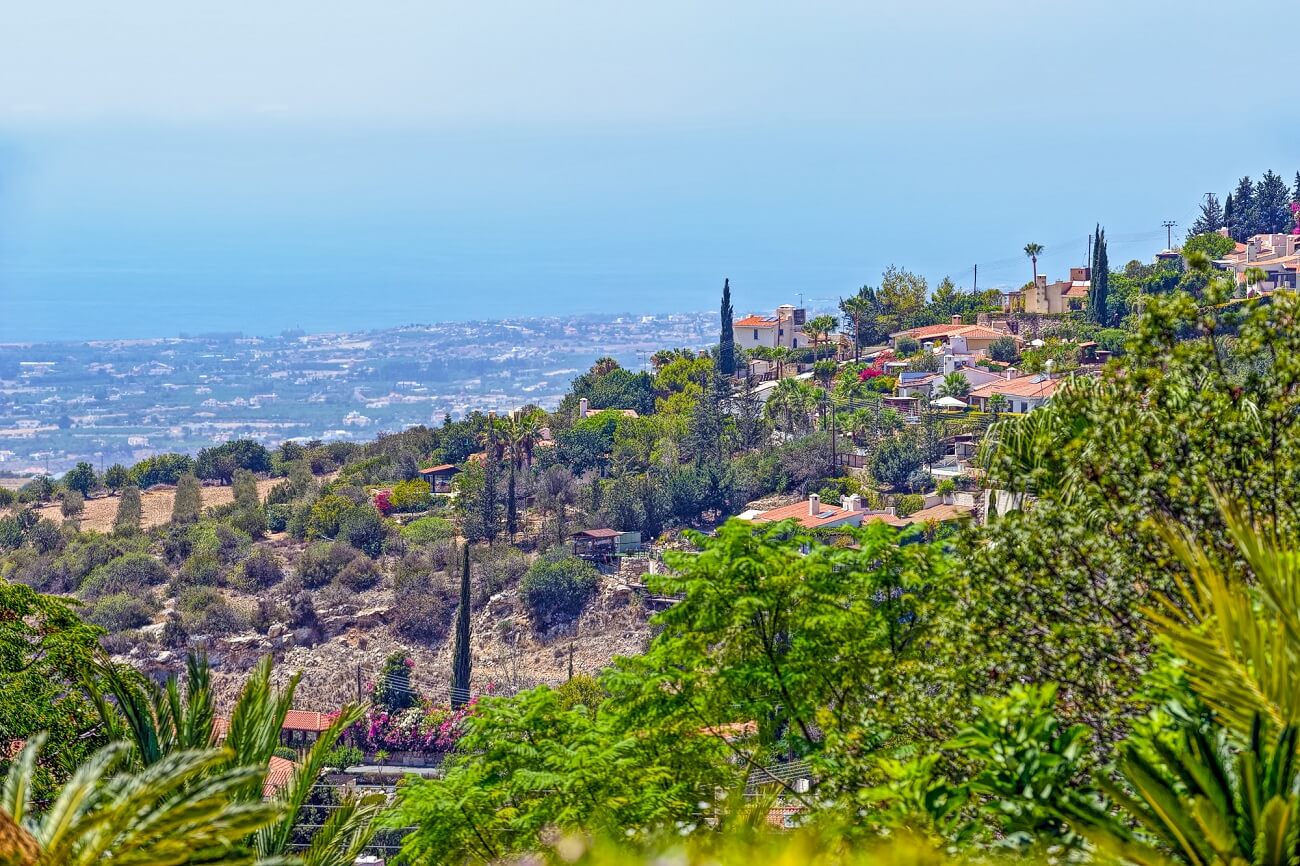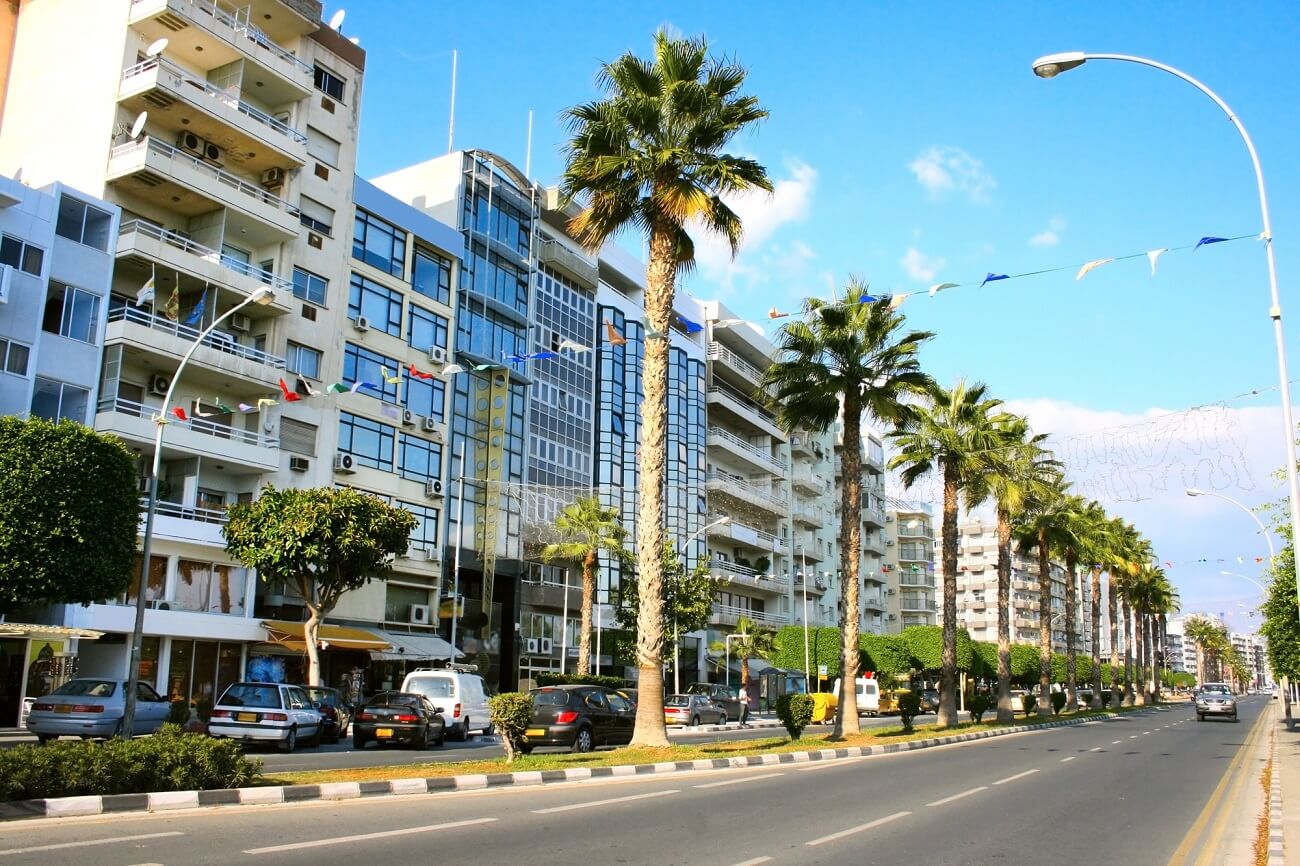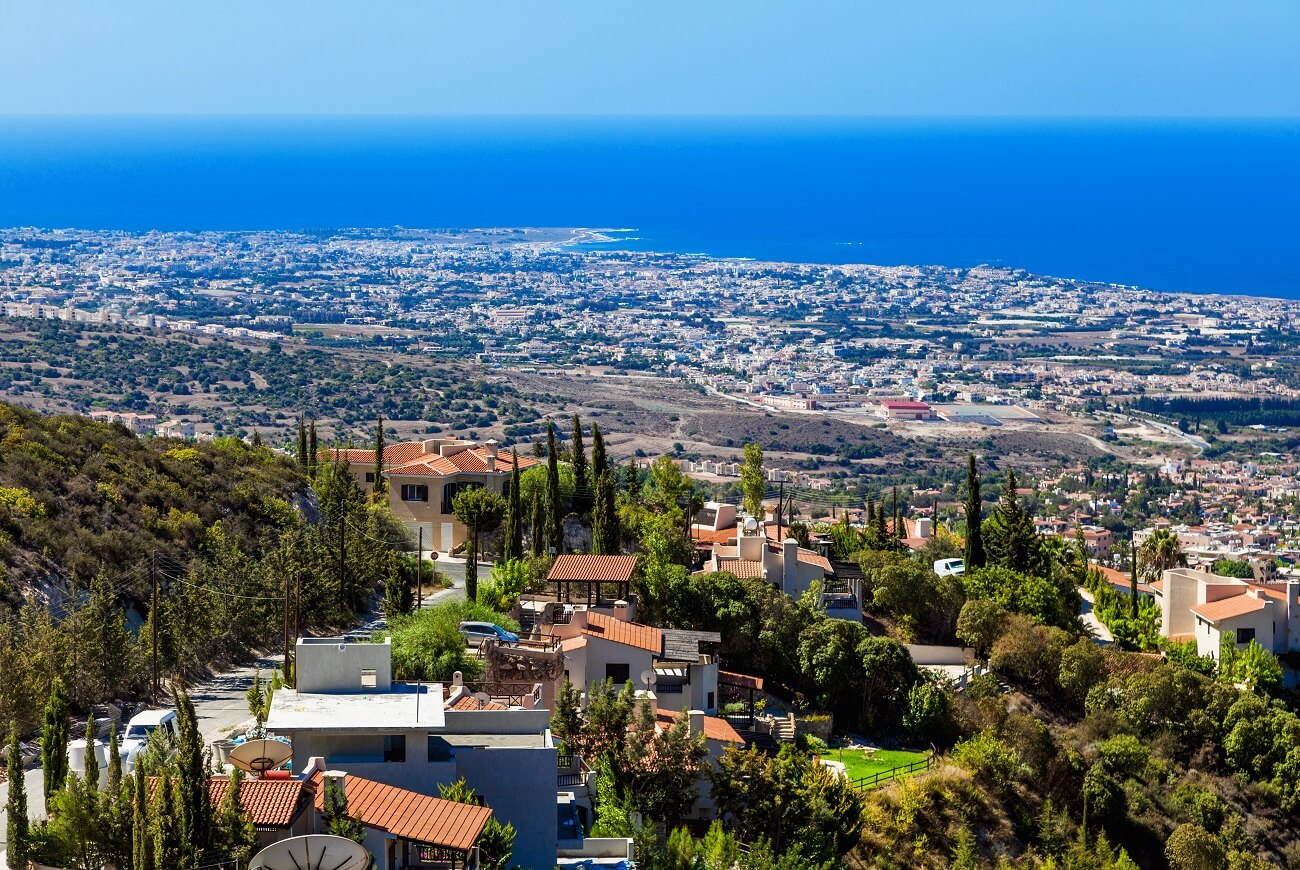

Famagusta (Gazimagusa) is a port city on the east coast of Cyprus, the center of the district of the same name and once the most important commercial center of the island. Geographically refers to the partially recognized Turkish Republic of Northern Cyprus. Today the population of the city is about 45 thousand. Walking through the sights of old Famagusta is covered with an atmosphere of mystery and is of particular interest to travelers. All thanks to the history of the city, in the past a world resort, whose fate was changed by the internal political conflict in Cyprus. All about Famagusta, her visit, history and places worth seeing, read in this article.

Depositphotos
History of Famagusta
Ancient Famagusta (at that time Arsinoe) was founded in the 3rd century BC under the Egyptian king Ptolemy II as a small port city. For the next few centuries, the city was under the rule of many states and rulers.
- The heyday of ancient Arsinoe falls on the 7th century, when the population of the city increased significantly during the Arab raids on Cyprus. During this period, fortress walls were erected around the city.
- In the 12th century, a developed settlement became part of the Cypriot kingdom. King Lusignan renames Arsinoe Famagusta in honor of his wife.
- In the 13th century, Famagusta became the largest port city in the Mediterranean and an important trading center.
- In the period from the 13th to the 15th century, the rich port city is considered the second capital of Cyprus.
- In 1570, after a long siege, Famagusta was conquered by the Ottoman Empire.
- During the British period, the railway and other urban infrastructure of Famagusta developed rapidly in Cyprus.
- At the time of the proclamation of the independence of Cyprus (1960), the city had an administrative center with Turkish and Greek municipalities.
- Early 70s of the 20th century: Famagusta turns into a major tourist center of Cyprus.
- Since 1974, after the division of the island, the city has been part of the Turkish Republic of Northern Cyprus.

Depositphotos
Varosha and the Turkish invasion
The development of Famagusta as a resort center fell on the period from the declaration of independence of Cyprus in 1960 to the Turkish siege in 1974. Then the largest quarter of Varosha with a hundred hotels was empty in one day. Exactly this much time was given to the Greek Cypriots to leave it. The resort center of Famagusta remains practically closed to this day. A huge number of hotel complexes have forever turned into abandoned, creepy places for modern civilization. Some hotels legally remain the property of foreign citizens. It is because of Varosha Famagusta has been nicknamed a ghost town. These places attract real stalkers and curious tourists. In 2020, for the first time, travelers were allowed access to the northern part of the district.
.jpg)
Depositphotos
Climate of Famagusta
Famagusta and its surroundings have a warm, temperate climate. In winter, there is much more precipitation than in summer. The hot season lasts from June to September. At this time, it is better to give preference to a beach holiday than traveling to the sights. At the height of summer, the air temperature can reach 41 ℃.

Depositphotos
Things to do in Famagusta
There are many ways to have fun in Famagusta. The main goal of tourists, of course, is to inspect architectural objects concentrated in the old city. In addition, Famagusta has several excellent beaches with all the resort infrastructure - from sun loungers to sea cruises and scuba diving. Walking through colorful quarters with market stalls and narrow streets should also not be excluded.

Depositphotos
The beaches of Famagusta
- Glapsides. A wide sandy beach near Salamis attracts with clean shallow water and developed beach infrastructure. There are many water attractions, noisy and quiet establishments, markets and all amenities. This is one of the most popular coasts around Famagusta.
- Silver Beach. One of the cleanest beaches in Cyprus with truly silver waters. Picturesque coast close to archaeological sites. From here you can also go on a boat trip.
- The public beach is great for families. There are many picturesque sections of the coast, not very crowded, besides, getting to the beach is not long and not difficult.
- Bafra. A secluded coastline, not so popular due to its remote location, but incredibly beautiful. The pristine sea nature away from the noisy resort centers.
- Long Beach. Lively place with a wide coastline. Long Beach is popular for sea turtles. In the local waters you can find different species.
- Konnos Bay Beach. The main place in the vicinity of Famagusta for diving and snorkeling. There are almost never waves here, but there are stunning underwater landscapes and biodiversity.
The beaches in the vicinity of Famagusta territorially include the coasts of the two best seaside resorts in Cyprus - Ayia Napa and Protaras.

Depositphotos
Shopping in Famagusta
Shopping in North Cyprus has a certain charm. In Famagusta you will find a huge selection of shops. But still, time for shopping in a colorful city is better spent among authentic stalls. It is customary to bargain here and there is an appropriate atmosphere. The main shopping street is Salamis road.
In addition to souvenir shops and market rows, here you can walk through boutiques of branded clothing and jewelry stores, which abound in the city. Pay attention to high-quality Turkish textiles at attractive prices, exclusive leather goods and locally produced natural cosmetics.

Depositphotos
How to get to Famagusta
The city is located to the east of Nicosia (Levkosha), the capital of Cyprus, which is divided by a border line into the Republic of Cyprus and the Turkish Republic of Northern Cyprus. A trip to Famagusta can be made by first crossing the border checkpoint in Nicosia. From here, a bus runs frequently to Famagusta (30 minutes on the way).
Pay attention! A visit to Northern Cyprus and, in particular, the city of Famagusta, is possible by ferry from Turkey, which departs from the port of Alanya, Tasucu and Mersin. The journey will take about 7 hours. But for the Republic of Cyprus and Greece, such crossing is illegal. In the future, there may be difficulties with visiting these states.
Traveling to Northern Cyprus across the border with the Republic of Cyprus is completely legal. No additional documents are required.

Depositphotos
Excursion to Famagusta
Organized tours of the once thriving tourist center of Cyprus will be filled with legends and stories about the main historical sights. Therefore, it is still worth buying a guided tour of Famagusta. Moreover, the study of information for independent routes will take a lot of time. You will want to see a lot of interesting places of the colorful city with your own eyes. Among the entertainment in Famagusta, itineraries through archaeological sites are given a place of honor.
- A sightseeing trip to Famagusta will cost about 50-60 euros.
- It is worth booking a trip in advance, especially during the tourist season.
- Usually meals are not included in the price of the tour.
- You must have your passport with you to go through passport control.
- You need to allocate a whole day for the trip.
- Be sure to bring a supply of drinking water with you.

Depositphotos
Sights of Famagusta
Despite the difficult political situation, the city remains a place of ancient sights and authentic corners of the Greek-Turkish culture of Cyprus. In the historical center there are several impressive buildings of religious significance and archaeological parks with evidence of bygone centuries.
Fortress of Famagusta
Or Othello's tower, Desdemona's fortress, Othello's castle - a fortification of 1310, the construction of which was begun under the king of Cyprus, Henry I de Lusignan. The reconstruction took place in 1492, during the reign of the Venetian Republic in Cyprus. The castle-fortress consisted of four towers connected by passages and corridors with loopholes.
In the courtyards of the fortress today you can see old cannons and stone cannonballs. An interesting object from the point of view of the history of Venetian Cyprus. The name, identified with the famous tragedy of Shakespeare, the castle received just in this period. In one of the towers, the commandant, in a fit of jealousy, ordered the murder of his wife.
This is the oldest building in Northern Cyprus, which has been preserved in excellent condition. Today you can visit the museum in the fortress. Be sure to pay attention to the old entrance with a bas-relief of a Venetian lion.

Depositphotos
Bastion Martinengo
Another architectural monument of the Venetian era in Cyprus, the Martinengo bastion is a vivid example of the military architecture of the Middle Ages. Powerful defensive walls, the thickness of which reaches 6 meters, were erected in 1558-1562. The huge citadel was built on a rocky elevation, so it remained a reliable defense even with the offensive on the island of the Ottoman Turks. There is a bastion at the harbor of Famagusta.

Depositphotos
Bastion of the Rivellino
The second powerful military structure of the old city is the Rivellino bastion - the oldest fortification building in Famagusta. It was erected during the period of French possession as a tower to strengthen the city gates. In the Venetian era, the building was rebuilt in a different way in the form of a bastion. This is the only entrance to the city from the north side, passing through the old drawbridge. It is very exciting to wander among the old tunnels with evidence of past eras.

Depositphotos
Cathedral of Saint Nicholas
The main temple of Famagusta, whose Gothic façade is visible from the farthest points of the city, dates back to the early 14th century. Now the cathedral is the mosque of Lala Mustafa Pasha. The presence of the main temple of Famagusta owes the Lusignan dynasty ruling at that time. In 1571, the cathedral suffered during the siege by the Turks. Priceless sculptures and frescoes were destroyed. During this period, the temple first became a mosque. In 1954, when the cathedral was converted into a mosque again, it was renamed in honor of the commander responsible for the capture of Famagusta during the siege of 1571. The mosque of Lala Mustafa Pasha is located in the heart of the old city.

Depositphotos
Cathedral of Peter and Paul
Another Christian temple of the 14th century, later turned into the Sinan Pasha Mosque. This building combines two architectural trends - Gothic and Byzantine. With the arrival of the Ottomans, all valuable frescoes, stained-glass windows and sculptures were destroyed. At the beginning of the 20th century, during the reign of the British, the cathedral served as a grain warehouse, so the people called it the Wheat Mosque. The powerful walls of the old temple, with vaulted columns and high windows, are striking. Today part of the cathedral is used as a public library.

Depositphotos
St. George's Cathedral
Not far from the main mosque of Lala Mustafa Pasha, there are the ruins of another historical temple, perhaps the oldest in Famagusta. The Cathedral of St. George was built in 1360-1370 in the Gothic-Byzantine style. The temple was significantly damaged during the Ottoman siege, and it also had several earthquakes. Today you can see only dilapidated walls with once stained glass windows and fragments of Italian frescoes.

Depositphotos
Ruins of the Palazzo del Proveditore
Lusignan Royal Palace, rebuilt by the Venetians in the 16th century. During the Ottoman period, the palace building was a prison. The western wall and 4 arched columns have survived to this day. Exhibitions, performances and concerts are often organized on the square near the ruins of the palace.

Depositphotos
Armenian monastery Ganchvor
In the northwestern part of the city, near the Church of the Blessed Virgin Mary, there is an ancient monastery founded in 1346 by the Kilian Armenians. A unique object from the point of view of ancient architecture, which was not used for 4 centuries after the conquest of Cyprus by the Ottoman Turks. A large-scale reconstruction of the temple was carried out at the beginning of the 20th century. Today it is a monastery of the Armenian Apostolic Church.

Depositphotos
Salamis
6 kilometers northeast of Famagusta, you can visit the unique village of Engomi, which has the ruins of a city from the Hellenistic era. This is a unique archaeological park in Northern Cyprus, where fragments of an ancient city founded after the Trojan War have been preserved. The best preserved ancient amphitheater for 1500 spectators is here. Walking among the ruins of Salamis is not worth it in the sweltering heat. Getting here is quite simple - along the highway along the east coast of Northern Cyprus to the sign for Salamis. The cost of the inspection will be about 3 euros.

Depositphotos
Where to eat in Famagusta
Not only old architecture and cultural mix Famagusta can cause delight. Here you can visit authentic cafes, restaurants and taverns with an incredible variety of dishes from world cuisines. The local dishes of Greek-Turkish origin are especially impressive. Many establishments are scattered both in the old and in the modern part of the city. The most sought-after restaurants in the old district are concentrated near Namik Square Kemal.
For a bite to eat while traveling in Famagusta, choose the most colorful establishments for an even more enjoyable experience.
- D&B Café. Turkish, Italian and international cuisine. Exclusive kebabs and an incredible pizza menu.
- Aspava. Traditional Turkish cuisine restaurant.
- Monks Inn. Bistro with an extensive menu of American cuisine.
- Ezic Magusa. Grill restaurant of European and Turkish cuisine.
- Ttappis is a traditional Greek tavern.
- Los Bandidos is a popular Mexican restaurant.
- Potamos is a Greek and Mediterranean restaurant.
- Shanghai Chinese. Chinese and Asian restaurant.
- Ginkgo. Cozy cafe with local dishes, located in a medieval building.
- Castello Cyprus Kitchen and Bar. A sophisticated establishment with an amazing selection of European and Mediterranean dishes.
- Ocean House Sea Food. Popular Cypriot chain restaurant with an amazing selection of seafood.

Depositphotos
Where to stay in Famagusta
The city has about 40 hotels and apart-hotels for different tastes and budgets. The most requested include:
- Long Beach Villas
- Arkin Palm Beach Hotel
- Grand Sapphire City Hotel
- Port View Hotel
- Concorde Luxury Resort
- Salamis Bay Conti Hotel Resort & SPA & Casino
- Doga Apartment
- Malia Holiday Let
- La Regina Venice

Depositphotos
Famagusta is one of the main cities of Northern Cyprus, for which it is worth once again crossing the border of the Cypriot states. Give yourself an unforgettable trip.
More articles
- Hyatt Hotels in the Maldives
- Diving in Mauritius: everything you need to know
- 10 Best Bali Hotels with Private Beaches
- Hotels in Indonesia on the rocks: the most incredible landscapes
- The best 5-star hotels in Ubud
- Top 8 largest hotels in the Seychelles
- Bali's Top 10 Power Spots
- Joali Being the first wellness island in the Maldives
- The best hotels in Bali with villas on the rocks
- Best Bali Hotels Adults Only



